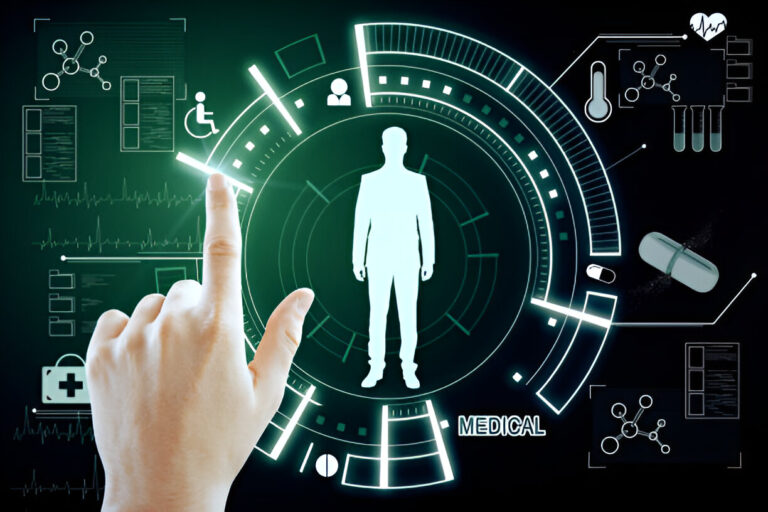Introduction
With the goal of maximizing the convenience of obtaining healthcare, providers and services are increasingly turning to technology to attract and retain patients. An interesting yet controversial aspect of healthcare technology marketing is the attempt to cold call patients who have not previously expressed interest in the service, which has historical roots in traditional telemarketing.
The need to automate patient acquisition with technology is spreading in the healthcare sector. It is controversial, however, due to typically low conversion rates that come with an impersonal approach to cold calling. Uses in the healthcare sector are more multifaceted than just revenue generation; spanning from lead generation for private practices and health insurance to patient outreach and appointment reminders.
Having a clear stance on method implementation is crucial for its success. Ethically, the method must not only be HIPAA compliant but also patient-centered. This article complements the discussion on cold calling by presenting what the modern healthcare setup requires and means to achieve the balance between automation and a human touch.
Cold Calling in Healthcare
Unlike other sectors such as retail or telecommunication, health care cold calling has more distinct and purposeful implications. It serves a variety of functions such as:
- Notifying patients about new services or openings at a clinic.
- Following up regarding missed appointments or waiting test results.
- Conducting wellness checks for chronic patients.
- Assisting in the lead generation of health insurance or specialized caring programs.
- Providing support during public health campaigns or vaccination drives.
Within these contexts, cold calling in health care industry is no longer merely a sales approach; it transforms into a connection between caregivers as well as patients and vice versa. The aim is not conversion, but rather engagement—conveniently educating patients, managing care, and enhancing health outcomes.
Obstacles Pertaining to Health Care Cold Calling
Regardless of the purpose, cold calling in healthcare encounters a broad range of challenges.
1. Regulatory Compliance
The healthcare industry is one of the most regulated fields. Cold calls must abide by HIPAA (Health Insurance Portability and Accountability Act) and TCPA (Telephone Consumer Protection Act). A breach in regulations such as unsolicited sharing of patient data, or unwarranted sales calls can prove damaging legally.
2. Privacy Considerations and Sensitivity Relating to the Patient
Matters pertaining to the health of a person are of utmost concern and critical. A violent offending health care telemarketing technique should be done with the utmost care and attention alongside professionalism and discretion.
3. Distrust and Skepticism
As robo and other forms of fraudulent calls become widely used, more and more people tend to shy away from unsolicited calling. Offending telemarketing health care services can affect how people perceive trust towards their health care service and the people running it.
4. Languages and Cultures Barrier
For instance, the United States presents a case of sociocultural and sociolinguistic diversity. For it to have any meaning, telemarketing in healthcare needs to be culture sensitive and multilingual.
A Blend of AI Thanks to Technology and CRM Technology – When Compared to Human Skill
The option of fully reducing human posts for healthcare organization marketers becomes tempting with AI and CRM tool advancement. While voice bots and robocalls just like any automated answering machines might be cost-effective and increase efficiency, they tend to miss empathy and variability, traits that are essential in the healthcare industry.
Stated Facts regarding the Benefits of Automation
Outreach rate
Round the clock availability
And consistent representation.
Data collection effectiveness and analytics
Cons of Putting Everything on Autopilot
Failing to respond to emotionally driven or complex questions.
People are more likely to hang up due to forceful and standardised approach.
Non-compliant programming raises compliance issues.
In contrast, human cold calls enable the use of emotional understanding, active listening as well as real-time strategy adjustments. Proficient callers can also create rapport, ask follow-up questions, and cater conversations to specific patient’s requirements. They do, however, require greater funding, higher training, and ongoing supervision.
Most successful healthcare organizations use a combination of both techniques: they employ automation to initiate contact and perform follow-up calls while reserving live representatives for sensitive, intricate, or high-value communication.
Guidelines for Health Care Cold Calling
For a cold calling campaign to be considered efficient, ethical, and productive in the health care sector, these components are necessary:
1. Definitive Aims
Every calling campaign—from those that seek to inform patients about new services to making appointment bookings or seeking insurance leads—should devise a defined purpose around which the message will be centered.
2. Regulatory Knowledge and Compliance
Before giving a call, the agents should undergo adequate training on HIPAA and know what can and cannot be disclosed. Compliance and legal departments should review call scripts beforehand to ensure approval.
3. Specific Contact Lists
Using CRM systems to filter contact lists and classify them ensures that patients and recipients are treated with dignity and regard.
4. Inclusive and Compassionate Employees
Call center operators should be trained in soft skills along with medical and cultural dialects. It is important to have a soothing and comforting voice as part of the phone etiquette.
5. Creative Adherence to Protocols
While sticks ensure uniformity, representatives should be allowed discretion to manage questions or sensitive topics appropriately.
6. Integrating New Technologies
The dialing systems, the CRM systems, and the analytics systems should be integrated to enable streamlined operations, performance tracking, and actionable insights.
7. Constructive Evaluation and Learning
Evaluation of performance, obtaining patient feedback, and monitoring calls help achieve more refined approaches which leads to better results over the long term.
Social Ethics of Health Care Cold Callings
Calling service in healthcare follows the highest standards of ethics in relation to caring for the patient and protecting their personal freedoms. These include:
Obtaining prior consent whenever possible.
Honoring do-not-call lists.
Clearly published opt-out options.
No aggressive sales strategies.
Openness about the person calling and the objective of the call.
Trust is the crux of health care and the most powerful healer, while, a single phone call could enhance or dismantle trust. Ethical measures are important, not as regulation guidelines, but as supporting spine to patient-centered care.
Looking Ahead: The Future of Cold Calling in Health Care
As technology advances, so too do the methods of patient outreach. AI-assisted calls utilizing natural language processing, personalized video messages, and text-and-phone call integrations may become more commonplace. However, the human element will always remain imperative, no matter how much we advance.
Patients desire to and deserve to feel like they are being listened to and understood, which is a service no bot can provide. The organizations who will thrive in cold calling are those who focus on leveraging technology towards connection rather than empathy replacement.
Conclusion
In the context of the cold calling, which is generally viewed as an invasive tactic, the healthcare industry is seen as an opportunity to transform outreach into patient-centric education and engagement. This shift in perspective must be approached with guided ethics, strategy, and foresight. A measured dose of automation greatly improves system overhead, but compassionate healthcare should always guide interactions.
Ultimately, healthcare is about people. And amid rapid digital development, a motivated person is still appreciated exceptionally.

david Miller is an experienced English language expert with a deep passion for helping others communicate effectively and confidently. With a background in linguistics and literature, He provides clear, accessible insights on grammar, writing, and communication strategies. Through well-researched articles and practical advice, David Miller aims to make language learning both inspiring and achievable for readers of all levels.


